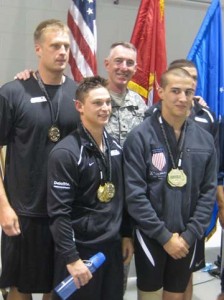
inTransition offers coaching services to WTs who receive behavioral health care and are about to transition between health providers.
Transition between providers can be a confusing time for any patient. It calls on us to get smart on the tools provided by the military so we can better serve injured Soldiers as they start taking their next step in the treatment process.
With this challenge in mind, I came across a relatively new program called inTransition. A program headed by the Defense Center of Excellence (DCoE) and Department of Veteran Affairs (DVA), inTransition offers coaching services to Warriors in Transition (WTs) who are receiving behavioral health care treatment and who are about to transition between providers.
inTransition is staffed by certified behavioral health providers and offers services 24 hours a day and 365 days a year to those who voluntarily seek their help. Whether it is learning about the resources available in a new location or a few words of encouragement during a challenging time, inTransition is available to all WTs and their Families.
From my perspective, everyone needs a coach and when it comes to behavioral health care, mixed with a change in providers, it becomes even more important. Because we all understand that these changes often lead to bumps in the road, I encourage providers to learn about this program and WTs to take advantage of their services.
To make it a little easier, inTransition is offering an introductory webinar on August 19th at 2:30 p.m. so all military mental health providers can learn more about the program. To register, follow the directions on the DCoE website: http://www.dcoe.health.mil/DCoENews/inTransitiontoHostWebinarAug19.aspx .
Getting smart makes us stronger, and now you can do it from your own computer screen.





![WTC-Booth_FINAL_low-res-300x229[1]](https://webarchive.library.unt.edu/web/20130312181821im_/http://wtc.armylive.dodlive.mil/files/2010/06/WTC-Booth_FINAL_low-res-300x2291.jpg)






